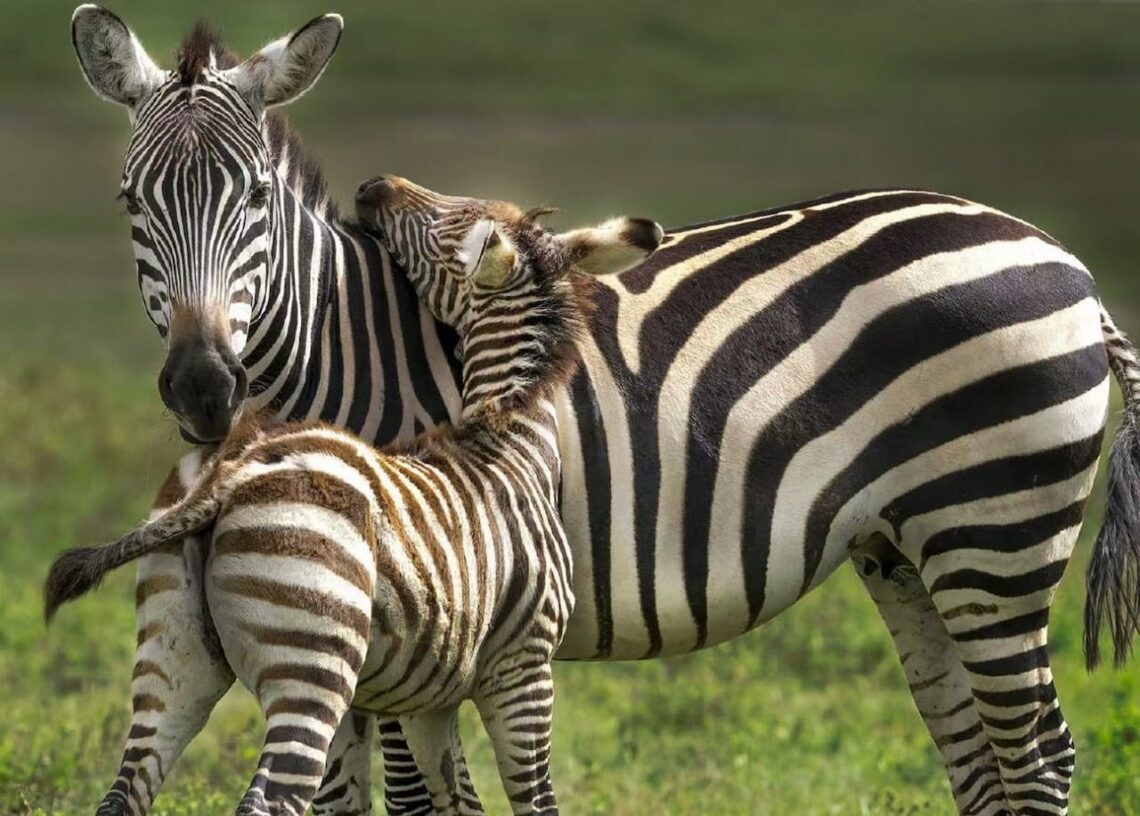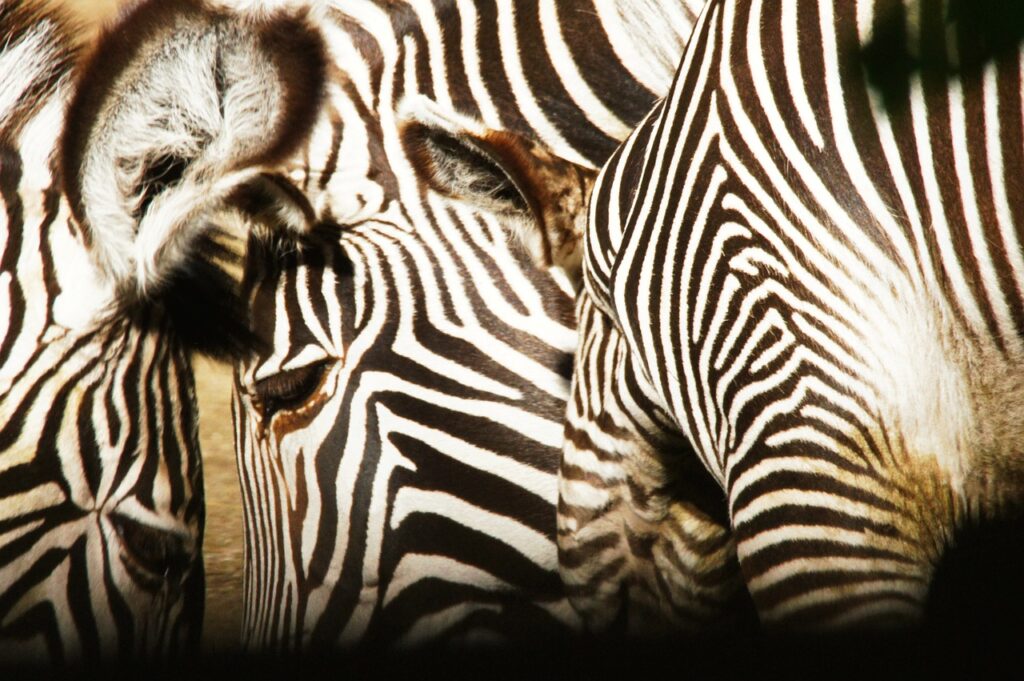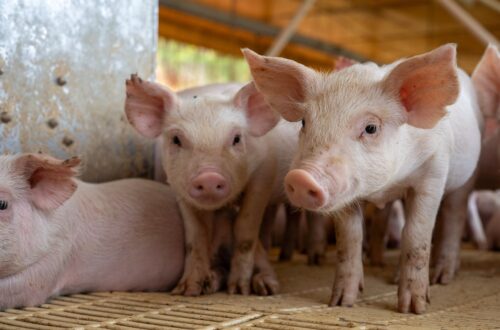
The Best 17 Facts About Zebras (Mysteries Unveiled)
Interesting Facts About Zebras
This article aims to satiate your curiosity by exploring some of the most interesting facts about zebras, offering a glimpse into their remarkable world, and why they captivate us so.
From their unique stripe pattern to their complex social structures, zebras are more than just beautiful creatures; they are a testament to the wonders of evolution and the diversity of life on our planet.
When we think of the African savannas, few images are as iconic as the striking silhouette of zebras against the golden grasses. The zebra, with its distinctive black and white stripes, is a subject of fascination and curiosity.
Here is a Table of Content to help you navigate this Article.
- The Enigma of Zebra Stripes
- Habitat and Lifestyle
- Conservation Status: A Striped Reflection of Our Times
- Facts About Zebras Frequently Asked Questions:
- Zebra Behavior and Adaptations:
- Human and Zebra Interactions: A Tale of Respect and Caution
The Enigma of Zebra Stripes
The Science Behind the Stripes
- Unique to Each Individual: Much like human fingerprints, no two zebras have the same stripe pattern. This uniqueness helps members of a group of zebras identify one another, serving as a sort of visual signature.
- A Matter of Black on White or White on Black?: Contrary to popular belief, zebras have black skin underneath their stripes. This discovery adds depth to our understanding of these animals and raises the question of whether they are white animals with black stripes or black animals with white stripes.
- Function of the Stripes: The purpose of a zebra’s stripes has been the subject of debate and research for years. Recent research suggests that stripes may serve multiple functions, from confusing predators with a phenomenon known as motion dazzles to regulating body temperature.
Subspecies and Their Patterns
Zebras come in different shapes and sizes, with three main species recognized: the plains zebra (Equus quagga), the mountain zebra (Equus zebra), and the Grévy’s zebra (Equus grevyi), each with their own unique stripe pattern.
The Grévy’s zebra, for instance, has narrower stripes that cover its white belly, differentiating it from other species. Understanding the different zebra species is crucial in appreciating their diversity and the specific challenges they face in the wild.
Habitat and Lifestyle

Facts About Zebras
Life in the Herd
Zebras are social animals, with a group of zebras or a ‘herd’ offering protection and companionship. The dynamics within these large herds or even smaller family groups can be quite complex. The position of their ears, facial expressions, and vocalizations are all part of how zebras communicate with one another, indicating everything from curiosity to aggression.
Across the Continent
Zebras are primarily found in Eastern and Southern Africa, from the rugged terrain of the Maasai Mara in Kenya to the plains of South Africa. Their habitats range from the savannas and grasslands of the continent where they roam in large herds, to more arid regions where they form smaller groups to adapt to the scarcity of water sources.
Conservation Status: A Striped Reflection of Our Times

Facts About Zebras
The Threats They Face
The stark reality for zebras includes challenges such as habitat loss, primarily due to human activities like agriculture and urban development. Climate change also plays a role, altering the ecosystems where zebras thrive. Additionally, species like the Grévy’s zebra and the mountain zebra are listed on the IUCN Red List of endangered species, facing the risk of extinction without significant conservation efforts.
Preserving the Stripes
Conservation initiatives focus on protecting the natural habitats of zebras and ensuring that national parks and reserves are managed to support healthy zebra populations. Efforts to mitigate habitat loss through sustainable practices are crucial to the survival of these animals.
Facts About Zebras Frequently Asked Questions:
What are the main differences between the species of zebra?
Zebras are broadly classified into three primary species, each with its own unique characteristics:
Plains Zebra (Equus quagga): This is the most common zebra species. They predominantly inhabit the grasslands of East Africa to South Sudan and Ethiopia, moving in search of food and water. They’re known for their broad, vertical stripes that often connect on their bellies. Plains zebras have various subspecies, with the Grant’s zebra being one of the most recognized.
Mountain Zebra (Equus zebra): Found in rugged terrains of South Africa and Namibia, the mountain zebra can be distinguished by its grid-like stripe pattern. They have a white belly and a flap of skin known as a dewlap on their neck, which is absent in other zebra species.
Grévy’s Zebras (Equus grevyi): Often referred to as the imperial zebra, the Grevy’s zebra boasts the thinnest stripes of all zebra species. Named after the French president Jules Grévy who received one as a gift in the 19th century, these zebras inhabit Northern Kenya and Southern Ethiopia. Unlike other zebras, they live in smaller family groups and can endure longer without water.
How can zebras’ stripes protect them from predators?
One of the most interesting facts about zebras is the potential function of their distinctive stripe pattern. Here are some theories:
Motion Dazzle: When a group of zebras moves together, the interchanging black and white stripes can disorient predators, making it hard for them to single out one individual. This visual confusion is known as motion dazzle.
Camouflage: While it might seem counterintuitive, the striped pattern can work as camouflage during dawn and dusk, breaking up the outline of the zebra against the grass.
Temperature Regulation: Recent research suggests that the alternating black and white stripes can help regulate the zebra’s body temperature. The black stripes absorb more sunlight, getting warmer, while the white stripes remain cooler. This creates micro air currents that cool the zebra.
Fly Repellant: Studies have shown that the stripes can deter blood-sucking flies. The striped pattern seems to confuse these pests, keeping them at bay.

Facts About Zebras Frequently Asked Questions:
What social structures do zebras have within their herds?
Zebras are indeed social animals. Their herds, sometimes called dazzles, can consist of several hundred individuals. Here’s a brief breakdown of their social structure:
Stallions and Mares: A dominant stallion often leads a group consisting of several mares (female zebras) and their young. The dominant male protects its group and often fights off rival males.
Bachelor Groups: Young male zebras that haven’t established their own harems form bachelor groups. They often stay on the peripheries of larger herds and challenge dominant stallions to win over mares.
Mother and Foal: Mother zebras share a strong bond with their foals. A baby zebra, or zebra foal, can recognize its mother through her unique stripe pattern, scent, and call. This bond is essential for the foal’s survival in the wild.
Why are some zebra species endangered?
Several factors have contributed to the decline in zebra populations:
Habitat Loss: The expansion of agriculture and human settlements has led to a reduction in the zebras’ natural habitat.
Hunting: Zebras have historically been hunted for their skin, which is used in fashion and home décor.
Competition for Resources: As water sources become scarce due to climate change and human activity, zebras find themselves competing with domestic livestock, leading to potential conflict with humans.
Disease: Diseases introduced by domestic animals can sometimes spill over to wild zebras, causing outbreaks.
Moving ahead with facts about zebras, zebras aren’t just fascinating because of their stripes or social structures. Their very existence tells a story of evolution, adaptation, and survival. As we delve deeper into their world, we uncover a narrative of the challenges and beauty of the natural world.
Zebra Behavior and Adaptations:

Facts About Zebras
Zebra Senses: A Guiding Light in the Wild
Zebras, as prey animals, have developed keen senses to detect and escape from predators. Their excellent eyesight allows them to see in color and recognize broad patterns, aiding them in identifying predators even at twilight. Their large, rounded ears not only capture the essence of their facial expressiveness but also grant them excellent hearing, enabling them to detect the subtlest of sounds.
Equally fascinating is the position of their eyes. Located on the side of their heads, this arrangement provides a wider field of vision, allowing them to see nearly 360 degrees around them. This panoramic view acts as an early warning system, alerting them to potential dangers.
A Life on the Move: Migration and Movement
Zebras are known to cover long distances in search of food and water, especially during the dry season. This nomadic lifestyle is essential for their survival in the often harsh climates of Africa. The Great Migration, witnessed in East Africa’s Maasai Mara and Tanzania’s Serengeti, sees thousands of zebras, alongside wildebeest and gazelles, undertake an epic journey covering hundreds of kilometers. This spectacle is not only one of the most interesting facts about zebras but also a testament to nature’s rhythm and the interconnectedness of life.
Sleeping Patterns: A Light Slumber
Zebras don’t sleep like humans. They take short naps, stand up, always alert to potential threats. However, when they feel safe—often ensured by the presence of a lookout zebra—they might lie down for a deeper sleep. This adaptation ensures their survival in an environment where predators are always on the prowl.
Human and Zebra Interactions: A Tale of Respect and Caution
While zebras are a sought-after sight on safaris and in national parks, they are wild animals with powerful kicks. Respecting their space and observing them from a distance is crucial for both human safety and the well-being of the zebras.
Facts About Zebras

Zebra Crossings and Their Origins
One of the fun zebra facts is the origin of the term “zebra crossing.” Named because of its striking resemblance to the black and white stripes of a zebra, these pedestrian crosswalks were designed to improve road safety. The parallel lines ensure visibility, reminding drivers to slow down and allow pedestrians to cross, much like the zebra’s stripes which serve as a visual signal in the wild.
Challenges and Conservation Efforts:
Despite their resilience and adaptability, zebras face numerous challenges in the wild. While natural predators like lions and hyenas are part of the ecosystem balance, human-induced threats have put certain zebra populations under significant strain.
The Impact of Climate Change
Climate change has profound effects on the habitats of zebras. Changing rainfall patterns, increasing droughts, and shifting grasslands mean that zebras need to adapt quickly or face dire consequences. As waterholes dry up and grasslands turn barren, zebras are forced to move further in search of sustenance, sometimes bringing them into conflict with human settlements.
Facts About Zebras
Conservation: A Beacon of Hope
Thanks to conservation initiatives by governments, local communities, and international organizations, efforts are being made to safeguard zebra habitats and ensure their survival. National parks and reserves across Africa have been established to provide safe havens for these striped wonders.
These protected areas not only serve as a refuge for zebras but also play a crucial role in promoting eco-tourism, ensuring that future generations can marvel at these magnificent creatures in their natural habitat. I hope this next article Interesting Facts About Veterinarians will be of help to you.
In conclusion, while zebras might seem like just another member of the Equidae family, delving deeper reveals a world filled with wonders, challenges, and stories waiting to be told. From their unique stripe patterns to their complex social dynamics, every zebra carries a tale of the African wilderness. If you have found these Facts About Zebras interesting please share this post, thank you.




